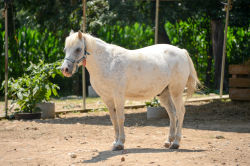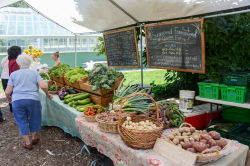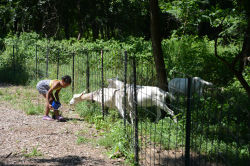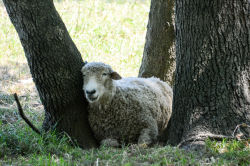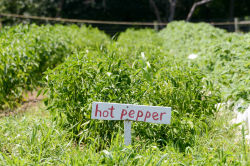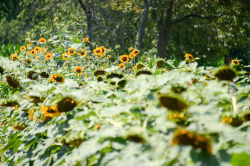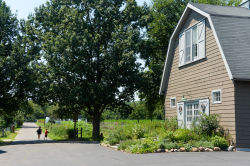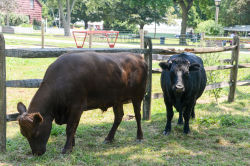Queens Farm Park
Queens County Farm Museum
What was here before?
This site was once called Flushing or Vlissingen, was established on land "purchased" from Native Americans, as required by the 1629 Charter for New Netherland. The New York State Archives hold records, including a 1639 deed, where Mechoswodt, chief of the Marossepinck and Sintsinck tribes, transferred land on the western end of Long Island to the Dutch. This land stretched from the Rockaways to Secatogue, and along the East River to Newtown Creek. The deal allowed the Native people to retain certain rights, such as farming, fishing, hunting, and protection from the Dutch.
In 1685, Governor Dongan issued an expanded land patent for Flushing to John Bowne and other settlers, which included the Native leaders, like Sachem Tackapousha (Mechoswodt’s son), selling the land again for a "valuable sum." The 1685 patent confirmed the 1645 land title and ensured no future disputes, though Native people still reserved the right to gather bulrushes from the land.
The land that is now the Queens County Farm Museum was originally owned by John Harrison, who sold it to Elbert Adriance in 1697, starting over 100 years of Adriance family ownership. After Elbert’s death in 1704, the farm passed to his son Rem, and then to Rem’s older son, Elbert, in 1730. In 1771, Elbert sold the land to his younger brother Jacob, who, with his wife Catherine, built the farmhouse in 1772 and farmed primarily for sustenance.
The Dutch-style farmhouse features a steeply pitched roof, four-foot overhanging eaves, and hand-split shingles. The house has two distinctive features: an English-style central chimney and a northern orientation, which was made possible by nearby hills that protected the house from winter winds. Between 1833 and 1840, Peter Cox doubled the size of the farmhouse.
Following Jacob’s death in 1797, the farm was bought by his adopted nephew, Hendrick Brinkerhoff, and later passed to Hendrick's son, Albert. Albert's sale of the farm to John Bennum Sr. marked the end of the Adriance family's era.
During the Adriance ownership, 14 enslaved individuals worked and lived on the property, performing agricultural and household tasks. Only their first names, documented through wills and census records from 1698-1820, included Dick’r, Titus, Jane, and others. New York abolished slavery in 1817, with full emancipation by 1827.
The Jacob Adriance farmhouse and farmland changed ownership several times in the 19th century. In the 1870s, the nearby Creed farm became the Creedmoor rifle range, and in 1908, the Creedmoor State Hospital acquired the site, expanding to include the Adriance property in 1927. From 1890 to 1926, the Stattel family operated a “truck farm” there, adding a greenhouse and other buildings in the 1930s.
How did this site become a park?
The area remained agricultural and was used by hospital staff until 1973. In 1975, the Colonial Farmhouse Restoration Society opened the Queens County Farm Museum, and in 1981, the land was transferred from the State to New York City.
The farmhouse was partially restored in 1984-86, and today, the museum’s seven-and-a-half acres of croplands and orchards demonstrate New York's agricultural history. The museum grows and sells produce, offers educational tours and workshops on farm life, horticulture, and food preparation, and features animals like geese, ducks, cows, and sheep.
The farm's expansion plan includes cultivating five additional acres, investing in workforce development, strengthening statewide agricultural partnerships, introducing year-round growing techniques, expanding the livestock program, and creating a controlled-environment agricultural showcase, all set for completion by 2025.
Queens County Farm Museum is owned by the NYC Parks, operated by the Colonial Farmhouse Restoration Society of Bellerose, Inc., and is a member of the Historic House Trust.
Check out your park's Vital Signs
Clean & Safe
Green & Resilient
Empowered & Engaged Users
Share your feedback or learn more about how this park is part of a
Vital Park System


